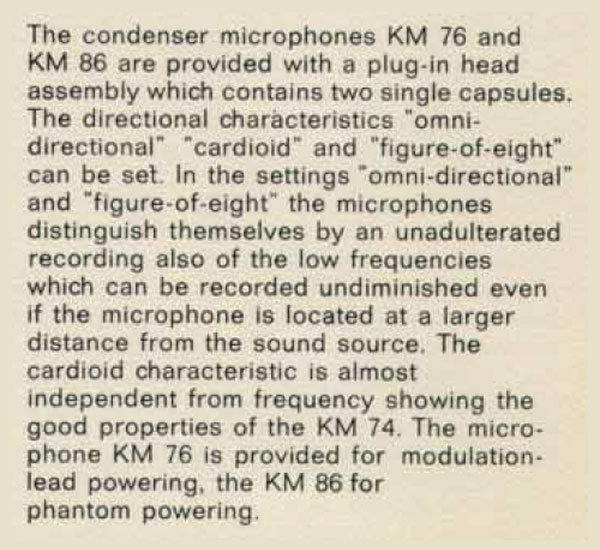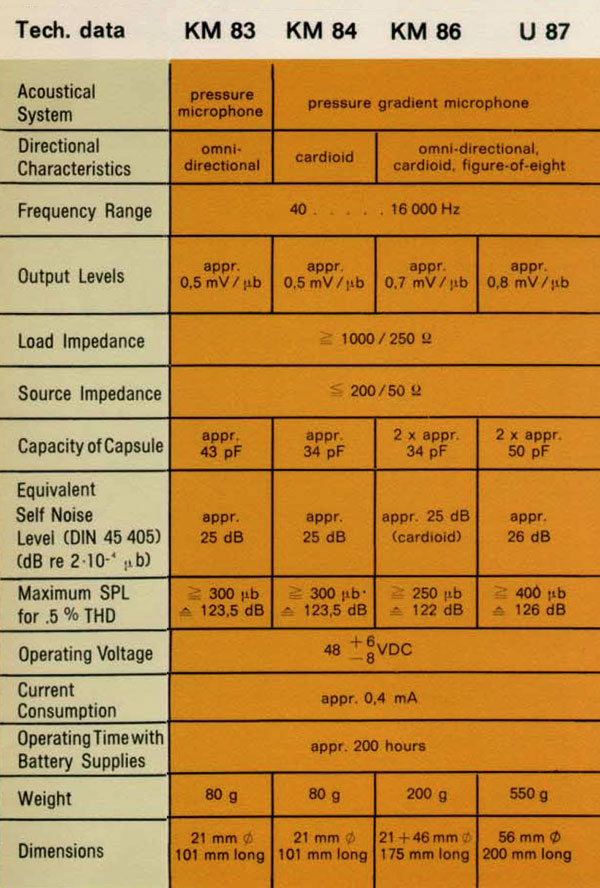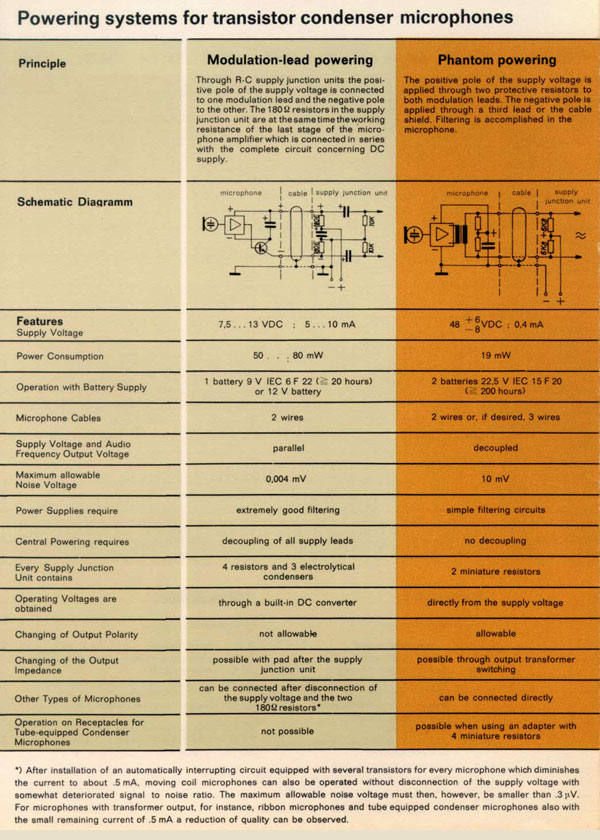
The Neumann Model KM 86
switchable pressure gradient microphone

Text is from the book entitled Neumann The Microphone Company, Chapter 5, pp. 87-90.
The 60, 70 and 80 small microphone series
In 1964, the KM series was improved and equipped with a new type of capsule, called the “crossed-slit” capsule. The idea was brilliant: Instead of a large number of drill holes in the back-plate, some of them blind, wouldn’t it be easier to cut tiny slits the equivalent size? Stephan Peus, the President of Development, fills in the acoustic background: “This creates a changed airstream situation for sound coming from the rear and has a positive effect upon the polar pattern, the directivity, and the frequency response from the side and rear. The airstream no longer impinges upon the particular diaphragm environment in an isolated way but is distributed by these slits. In this way, the sound reaches a greater area of the diaphragm leading to a very linear frequency response. The same thing can be achieved through the skillful arrangement and execution of drill holes, but the use of slits is less costly.”

The crossed-slit capsule is still used in many of Neumann’s small microphones, and is also found in the current products of the KM 180 series as well as the KM 100—astonishing to think that an idea developed by Neumann engineers back in 1964 can scarcely be improved upon to this day, but an indication of the quality of Neumann’s development department in the mid Sixties. “Although almost forty years old, the capsule design is even today highly modern. The noise data of the microphones, for example, were always determined by the electronics,” says Peus. “This can be demonstrated by a simple example: The equivalent noise level of the KM 64 is 21 dB (A); for the KM 84 it is 17 dB (A), and for today’s KM 184, 16 dB (A). These reductions in noise are due to improvements in the electronics. The capsule has not changed.”

The dual-diaphragm system of the switchable KM 66 (later KM 76 and KM 86) features an innovation: The two diaphragms are not, as they are in the U 87, arranged as half capsules back to back to form a dual-diaphragm capsule, but as two separate capsules about a centimeter apart. This affects above all the low frequencies when the figure-of-eight polar pattern is selected, which with dual-diaphragm capsules, because of the very small phase differences in this frequency range, suffer a clear drop in level. When the capsules are separated, as in the design just described, this is not the case, which makes this microphone ideal for MS applications.

In the mid Sixties, with the transistor rapidly gaining ground, the tube era drew inevitably to a close, and in 1965, Neumann released the first solid-state microphone with AB powering, the KTM, the name of which was soon changed to KM 74 with the introduction in 1966 of the KM 70 series. The same year also saw the launch of the (phantom-powered) KM 8o series. Confused about the nomenclature? A quick summary: The final digits of the KM series denote the polar pattern: 3 for an omni, 4 for a cardioid, 5 for a cardioid with bass roll-off and 6 for a microphone with switchable polar patterns. The penultimate digit indicates the amplifier: 6 denoting the AC701 tube, 7, 12V AB powering, and 8, phantom power. For a time, the individual series ran in parallel, with the 60 series continuing until 1971 and the AB powered models until the mid Seventies, whilst the models with phantom power came onto the market in the mid Sixties.

The modular system
Already with the KM 80 series, all three capsules employed the same amplifier, so the amplifier was no longer tied to a single type of capsule. Neumann engineers took the idea a stage further in 1982 with the KMF 4 small microphone series, in which the amplifier and capsule were separated, allowing the small capsule to be concealed more effectively. This made the KMF 4, for which various mounts were available, the ideal system for stage and TV work. With the help of the more compact hybrid circuitry, Neumann engineers went one step further in I988 with the development of the AK30 to AK 50 capsule series. These active capsules formed the basis for the KM 100 small microphone system and were later also included in the KMS I40/I50 vocal microphones. The KM 100 system covers all bases, with seven capsules for the principal polar patterns, and a wide variety of accessories including goosenecks, stand mounts, a wide range of cables, swivel mounts and stereo mounts for the XY-, ORTF- and MS-stereophonic recording techniques.







